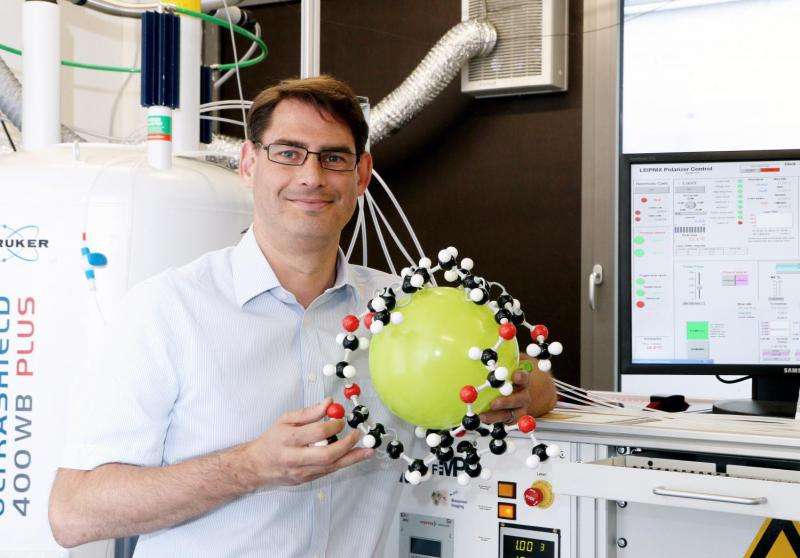New approach for Parkinson's diagnosis with flux compensator

A new project for the early detection of Parkinson's disease with strongly magnetized xenon gas has been initiated at FMP. The team led by physicist Leif Schröder has received a three-year grant from the Michael J. Fox Foundation for Parkinson's Research. This research aims to make a link between science fiction and pioneering basic research.
One year ago, "Back to the Future Day" (10/21/2015) was celebrated worldwide to commemorate the film trilogy "Back to the Future" and Marty McFly's 30-year time travel. This was also an opportunity to take a look into the future of science. In particular, the lead actor, Michael J. Fox, reflected on advances in medicine since 1985 in the context of his Foundation which is dedicated to the study of Parkinson's disease.
The Leibniz-Institut für Molekulare Pharmakologie (FMP) has now launched a project for the possible early detection of Parkinson's that shares an important feature with Doc Brown's famous DeLorean. It shows how unconventional ideas play an important role both in science fiction as well as in new scientific approaches. An essential component for the implementation of time travel in the movies was a so-called "flux compensator," which later became a phrase of some popularity in German slang, an erroneous translation of the "flux capacitor" from the English original. But what kind of flux can be influenced or compensated with this device?
In the movie, it permitted a compression of the time flux to enable time travel. Another type of flux is magnetic flux which is used to describe the strength of magnetic fields. For certain applications, there is indeed a desire for a kind of compensator, namely for a relatively low magnetic flux to match conditions as under very strong fields. One application is magnetic resonance imaging (MRI) where one would aim to apply even stronger magnetic fields to achieve sharper images and faster data acquisition. However, since this approach is technically limited, scientists have been developing methods in which the detected molecules are manipulated such that they emit a significantly enhanced signal – just as if they would be in a much stronger magnetic field.
One of these methods works with very intense infrared laser light ultimately to enhance the magnetization of the harmless noble gas xenon. The obtained signal strengths allow for the detection of formerly inaccessibly small amounts of substance. For several years, the "Molecular Imaging" research group at the FMP led by physicist Leif Schröder has been developing new MRI methods that rely on just such a "flux compensator" and has demonstrated the impressive potential of this method. Now, it is to be used in a next step that aims at the possible early detection of Parkinson's disease. The sensitivity of the technique would otherwise only be achieved with a 20,000-fold stronger magnetic field, which would only occur on a neutron star.
In the project supported by The Michael J. Fox Foundation with a grant of $349,500 USD over three years, the team will develop a new type of contrast agent for MRI with the artificially magnetized xenon. It involves a molecular unit known to bind to the protein α-synuclein. Deposits of this protein are considered to be one of the causes of Parkinson's disease. The contrast agent first detects the presence of the protein by a signal change of the xenon before the formation of harmful deposits takes place. Thus, it also has a protective effect, since the later impacts of the deposits can be prevented.
In the tradition of Campus Buch, the latest methods in physics in the life sciences will be used to bridge the gap between the legendary flux compensator and potential applications supported by The Foundation. Examples of this tradition include the early use of neutron generators in radiation biology and therapy, and the work of the Ruska brothers concerning electron microscopy.




















